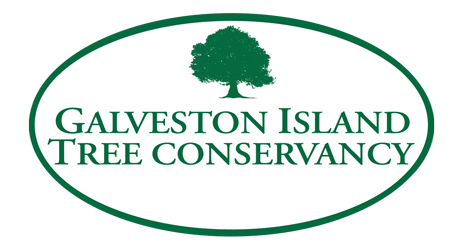Shade
by Margaret Canavan
GITC Board Member, Galveston Co. Master Gardener
Courtesy: Galveston Daily News
It is HOT in Galveston County. The “dog days” are upon us, that period of highest temperature and least rainfall in the northern hemisphere. During this sultry season we appreciate trees for the shade they provide. The sun is our friend and we could not survive without it. But right now it can feel good to get out of its direct rays.
I don’t know about you, but I do not leave my car parked in the sun if there is shade nearby. When walking my dogs, I seek the shady side of the street rather than walking in the baking sunlight. Animals know the value of tree shade; you see pastured cattle in the countryside invariably clustered in the shade of every available tree in our hotter months.
And what gives the very best shade? Trees, of course.
Studies have found differences of 20 to 35 degrees between the temperature of a hard surface in direct sunlight versus that shaded by the canopy of a tree. This is due to more than just the lack of sunlight on shady spots. Tree-covered areas create a “cool island” through the process of evapo-transpiration of water through pores in the leaf surface, which has a general cooling effect on surrounding air as moisture from leaves becomes water vapor. Trees reduce the amount of re-radiated and reflected heat from streets, buildings, and sidewalks. You are likely to be cooler in the shade of a tree than you would be in the shade next to a building, because that building stores and radiates heat.
In addition to creature comfort, there are economic benefits derived from tree shade. It can significantly reduce the need for air conditioning during hot weather. A university study found 20 degrees lower room temperatures in an uninsulated house during summer, because of tree shade. This translates into less cooling power needed for air conditioning; properly planted trees can cut air-conditioning costs by 15 to 35%. (west wall shading provides is the best cooling cost savings) An additional 10% energy savings can be gained when cooling equipment is shaded also.
Municipal budgets can benefits from shaded pavement. Direct sunlight can heat streets to 130°F which speeds their deterioration and need for repair. Research has shown that more shade means more time before repaving. "Without shade, Galveston's streets are deteriorating faster than before the storm; asphalt road surfaces shaded only 20% by trees show an 11% reduction in deterioration, which constitutes a 30 to 60% resurfacing cost-savings over 30 years!", says Tree Conservancy Senior Arborist Priscilla Files.
Try a few experiments that will demonstrate the effects of tree shade. While driving down a city street, notice what happens when you drive from sun into shade. When out walking, notice the difference between how you feel in the shade, and in the sun. Remove your shoes on a hot day and stand on a shaded walkway, then try to stand in a sunny section. Take a garden hose and spray the leaves of a tree (Sycamores are especially good for this) and then go stand under the delightfully cool air that descends.
Of course there are many other benefits from trees. But right now it’s shade that we notice and appreciate. Long live our shade-giving trees!
Hurricane Ike caused the loss of 40,000 trees on Galveston Island. The Galveston Island Tree Conservancy was formed to address that loss and to date has replaced almost 11,000 through grant-funded plantings and giveaways, with more planned.
———
“Tree Stories” is an ongoing series of articles about island trees, tree care and tree issues. If you have or know of a special tree on Galveston Island that should be highlighted, email treesforgalveston@gmail.com. Margaret Canavan is a Galveston resident, a Galveston County Master Gardener, and a member of the Galveston Island Tree Conservancy Board.

